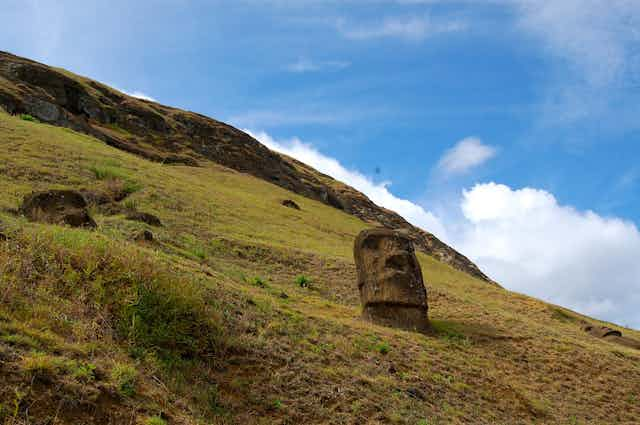In 1947 the Bulletin of Atomic Scientists set up a clock telling us how close we were to global calamity. It was initially set at seven minutes to midnight; then its hands shifted back to 17 minutes to midnight following the signing of the US–Soviet Strategic Arms Reduction treaty. In January this year, the hands were pointed at five minutes to midnight, the closest to doomsday yet.
The Bulletin announced:
Two years ago, it appeared that world leaders might address the truly global threats that we face. In many cases, that trend has not continued or been reversed.
In fact, the global community may be near a point of no return in efforts to prevent catastrophe from changes in Earth’s atmosphere. The International Energy Agency projects that, unless societies begin building alternatives to carbon-emitting energy technologies over the next five years, the world is doomed to a warmer climate, harsher weather, droughts, famine, water scarcity, rising sea levels, loss of island nations, and increasing ocean acidification.
Since fossil-fuel burning power plants and infrastructure built in 2012-2020 will produce energy — and emissions — for 40 to 50 years, the actions taken in the next few years will set us on a path that will be impossible to redirect. Even if policy leaders decide in the future to reduce reliance on carbon-emitting technologies, it will be too late.

Homo sapiens: where to now?
In October, researchers, academics and commentators gathered at the Australian National Library to discuss the prospects for our species, at a conference held by Manning Clarke House and called “The future of Homo sapiens”.
Discussion covered climate change, biology, anthropology, medicine, human evolution, the role of fire, ethics, politics, and cultural, spiritual and philosophical perspectives.
Keynote speaker Philip Adams - in whose honour the conference was held - spoke of the existential threat to humanity and nature that is climate change. He had earlier expressed his increasing pessimism and particular concern that: “Western democracies may be unable to effectively tackle the problem. Politicians are not the most courageous people. In so far as they think at all they tend to think in the short time frames of the election cycle.”
The 2009 Copenhagen conference agreed to hold the increase in global temperature below 2 degrees Celsius. It is only thanks to industrially emitted sulphur aerosols that mean global temperatures have not as yet exceeded 2 degrees Celsius. But as Michael Raupach from CSIRO pointed out to the conference, it may already be too late.
How did we get into this situation?
Beginning with the mastery of fire, our creative and destructive powers culminated in the industrial age. The combustion of carbon stored in sediments over periods longer than 400 million years are transforming the atmospheric conditions from those which allowed the onset of agriculture about 10,000 years ago.
Colin Groves explained how Homo sapiens developed as stone tool-making emerged, and gradually became more sophisticated. Brains were enlarged, the body changed shape and we interbred with other archaic human species.

Much of our development is based on our relationship with microbes; but that relationship could also be our downfall. Tony McMichael reminded us that the majority of cells in our bodies are bacteria, and that “the contemporary struggle between microbes and humans in this era of ‘emerging infectious diseases’ is one facet of a much broader spectrum of microbe-and-human co-evolution”.
But it is the use of fire which uniquely distinguishes Homo from other members of the animal kingdom. Evolved on the surface of a flammable, carbon-rich biosphere exposed to an oxygen-rich atmosphere, the skill humans acquired in igniting fire and combustion has become their blueprint. And it has affected the rest of nature.
We can’t un-become who we are, or un-create the world we’ve made. The question now is what we can do to repair the damage done.
Decisions of godly proportions
As Clive Hamilton said: “We must ask ourselves a far-reaching question: are we capable of managing the earth? We can expect the world to divide into two camps — the Prometheans, after the Greek god who gave humans the tools of technological mastery, and those who might be called Soterians, after the Greek goddess of safety, caution and deliverance.”
Tom Faunce would perhaps fall on the Promethean side. He explained how new technologies for carbon sequestration and artificial photosynthesis hold out hope in our struggle to stabilise CO2 levels at between 350 and 375 parts per million (ppm) by 2050.
But what hope such technologies unless societies choose to implement them? Governments certainly have the legal tools to turn things around and control carbon emissions, according to former High Court judge Ken Crispin.
“The few measures taken or even proposed to carbon emissions have been tentative, tokenistic and hopelessly inadequate,” he said. “Some, like the Australian carbon tax, may even have been counterproductive. Yet Australian governments and their international counterparts have long had adequate legal powers for controlling undesirable emissions”.
What about the future?
Of course, it would be easier and quicker for Homo sapiens to save ourselves from a climate-changed future if we were all on the same path. But we are not. Robert Manne reminded us of the denialists’ victory: “With America’s withdrawal from the international struggle to combat global warming, it is certain in the near-term at least, that nothing serious can be achieved.”
George Brownings and Bob Douglas provided some solace and hope. The former cited Jurgen Moltmann: “Because we cannot know whether humanity will survive, we must act today as though the future of all humankind depended on us and at the same time trust wholly that God will remain true to his creation and not let it fall.” Or as Bob Douglas said, “Our children can help to lead the way.”
At the conclusion of the conference, a statement was endorsed by Manning Clark House and by a show of hands by the attendees.

